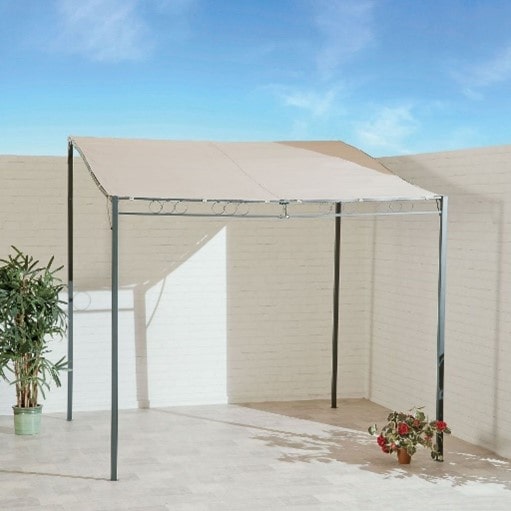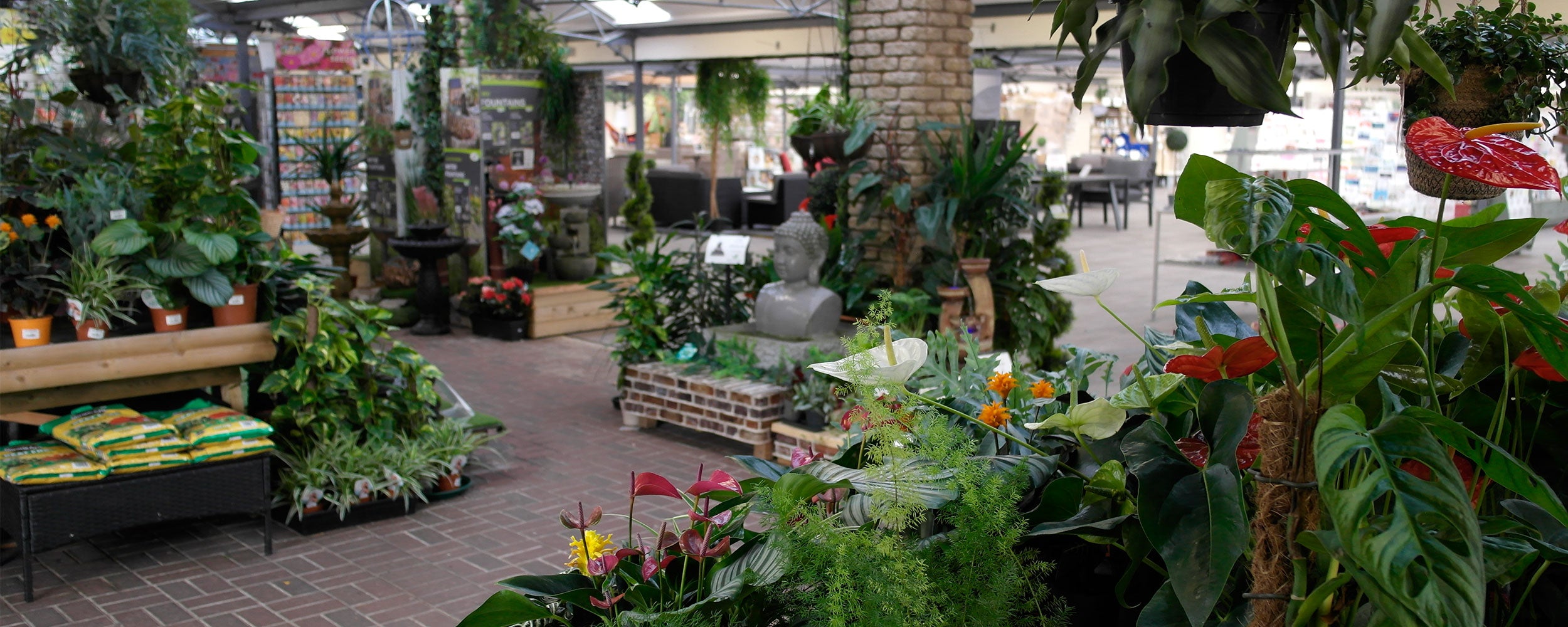Buyer's Guide - Gazebos
Gazebos are a classy, timeless structure that provide so many opportunities in a garden. Perfect for a multitude of functions, including sheltering outdoor dining sets or luxurious seating areas from all the elements, a gazebo is a beautiful addition to any garden. In this buyer’s guide, you’ll find everything you need to know before investing in your own gazebo to help you make the best decision when purchasing.
If you can’t find what you’re looking for on this page, please do get in touch with the Sefton Meadows customer service team by calling on 0800 157 7265 or sending an email to [email protected].
Check out our full range of gazebos
What Is a Gazebo?
A gazebo is a multi-functional shelter with open sides to allow protection and privacy while in a certain area of a garden. Perfect for use over hot tubs, pools and outdoor seating or dining areas, a gazebo provides a private section to any garden that is protected from weather and passers-by so you can enjoy your garden in peace all year round.
Types of Gazebo
A gazebo is a long-term investment, so making sure you buy the right one is essential. There are several different types of gazebos that will cater to different needs and spaces, so to help you when purchasing your own, you have to ask yourself how exactly you will use your new gazebo. Do you want it to cover your back door? Your patio? A hot tub? Or just provide a place of shelter and privacy within your own garden? Here are the different types of gazebos, and where they will fit best:
Pop-up Gazebos
Often used for picnics, temporary shelter or makeshift market stalls, pop up gazebos are fairly easy to put up, take down and store away. Ideal for garden parties, outdoor gatherings and a little privacy on the move, a pop up gazebo will be perfect if you want the shelter and protection of a gazebo but don’t want to sacrifice the space all year round.
View our Pop-up Gazebos
Free Standing Gazebos
A free standing gazebo can be placed anywhere in your garden and provide shelter for a BBQ, hot tub, dining table or seating area. The most popular choice for garden shelter, a free standing gazebo doesn’t require any additional support, but most are light enough to manoeuvre easily.

Lean-To Gazebos
Requiring a wall to lean against, lean-to gazebos are more permanent structures than the others because they need to be installed or mounted. Usually found on patios or covering back doors, lean-to gazebos are great shelter for decking, outdoor furniture and entertaining areas.

Gazebo Tents
Perfect for public events as well as private parties and BBQs, a gazebo tent provides the ultimate privacy with a canopy and three walls. With polyethylene windows to let in some light, gazebo tents make for a luxurious space that can be taken down and stored away easily.
What To Consider When Buying a Gazebo
There are several things you should take into account when buying a gazebo to make sure that you are investing in the right one for you. Before making the final purchase, make sure you consider:
- The Size of Your Garden – Making sure that you buy a gazebo that will fit in your garden and won’t create a cramped feel is important. If your garden is quite small, for example, opting for a pop-up gazebo will likely be best for you because you can store it away when not in use.
- The Style of Your Garden – Choosing a gazebo that will match the style of your garden and your house is essential for a coordinated result.
- The Furniture – If you have any outdoor furniture in your garden or are planning to use your gazebo to shelter any, you should choose a design that matches this. View our range of outdoor garden furniture here.
- The Material of the Gazebo – Gazebos can be made from wood, metal, vinyl, iron, or canvas, so choosing a material that you like and will be able to maintain is important.
- How Often You’ll Use It – Whether you plan on making a gazebo a permanent fixture in your garden, say to cover a hot tub or a patio, or just want a pop up one for summer parties, how often you will use your gazebo should play a part in the final decision.
- What You’ll Use It For – Knowing what you want your gazebo to be used for will help determine the size and type that will be best for you.
- Any Extras – Gazebos can come with a range of extras like shelves, trellis, curtains, blinds, and retractable canopies, so shop around to see if there’s any accessories you want.
How To Maintain Your Gazebo
Gazebos are amazing additions to a garden because they provide a sheltered space for outdoor entertaining all year round with very little maintenance. That being said, there are a few things you should keep on top of to make sure you get the most out of your gazebo and can continue using it for several years to come. To take the best care of your gazebo, you should carry out regular maintenance at least once a month.
- Remove Debris – Leaves, twigs and plenty of other natural litter can often gather on a gazebo roof, so you should clean it off regularly. Although this isn’t much of a summer job, keeping on top of it throughout autumn and winter is vital to stop debris gathering and rotting on your gazebo’s roof. When cleaning, never use a leaf blower or stand on the roof – use a long handled broom and sweep the clutter off from a secure ladder.
- Clean Regularly – Use a soft scrubbing brush and a mild soap mixed with warm water to gently clean the entire gazebo. Make sure to thoroughly scrub the railings, posts and floor to remove any waste that could damage the material.
- Remove Insects – Make sure to remove any insect nests or spider webs that pop up inside your gazebo as soon as you see them to stop bugs spreading. Use specialist insecticides to clear up the nests and make sure they are completely inactive before moving.
- Repaint It – If you have a wooden gazebo, it’s recommended that you scrape the old and peeling paint off every few years. To protect the wood, repaint it immediately. This also gives you the option to try different colours on your gazebo.
- Waterproof It ¬– If your gazebo is wooden or iron, it will need regular waterproofing to protect it from long term consequences. Apply a waterproof sealant every two to four years to a wooden gazebo or a polyurethane spray annually to a wrought iron gazebo.
How To Store A Gazebo
Gazebos can be left up all year round with the right protection, but to guarantee longevity, it’s recommended to store a gazebo away through the autumn and winter months if possible. Make sure to clean your gazebo thoroughly and let it completely dry before taking it down and storing it safely in a shed or storage box.
If you have a gazebo that is too big or awkward to store away, don’t panic. There are plenty of good quality gazebo covers on the market that will protect it throughout the colder months, just make sure iron or wooden gazebos have been properly waterproofed before covering.
FAQs
How To Put Up a Gazebo
Putting up a gazebo is a generally easy practice, but it will differ depending on the type of gazebo you have. Before beginning assembly, make sure all the parts that should be there are, and that you have any equipment you may need to hand – a hammer, a ladder or a screwdriver, for example.
For a pop up gazebo, begin by removing everything from the storage bag and standing up the frame where you want your gazebo to stand. Partially open the frame, then drape the canopy on top, aligning three of the four corners with the frame so the material forms a tent shape. Then lift the legs and pull them outwards to expand the frame and lift up the canopy. Make sure that any brackets are locked in place before adjusting the canopy and attaching it to all four corners. Extend the frame legs, attach any walls and anchor down the frame to complete the assembly.
Most freestanding gazebos are put together like ready-to-assemble furniture. Keep hold of the manual and follow the instructions for the safest structural results.
Do You Need Planning Permission for A Gazebo?
In most cases, planning permission is not required for temporary gazebos. Unless you live on protected land, occupy more than 50% of your property with outdoor buildings or want to put your gazebo at the front of your house, you should be okay. For permanent structures, they must be less than 2.5 metres in height and less than 2 metres from the property boundary for planning permission to not be required. It’s often best to check with your local council before going ahead just to double check.
How To Secure A Gazebo
There are several options for securing a gazebo. You could use leg weights, pegs and ropes, anchoring kits or threaded rods to hold your gazebo in place through the worst weathers.
Can A Gazebo Stay Up All Year Round?
As long as local authorities and planning regulations are followed, there are now laws against keeping a gazebo up all year round.
Our Range of Gazebos
At Sefton Meadows, we offer a variety of elegant gazebos to cater to all requirements. With sturdy, weather-resistant frames and lightweight canopies to keep you protected all year round, our gazebos will fit seamlessly with any style of garden or furniture. Whether you’re looking to shelter a hot tub, create a private sitting area or host a BBQ cook out, we can guarantee one of our gazebos will cover all your needs.

